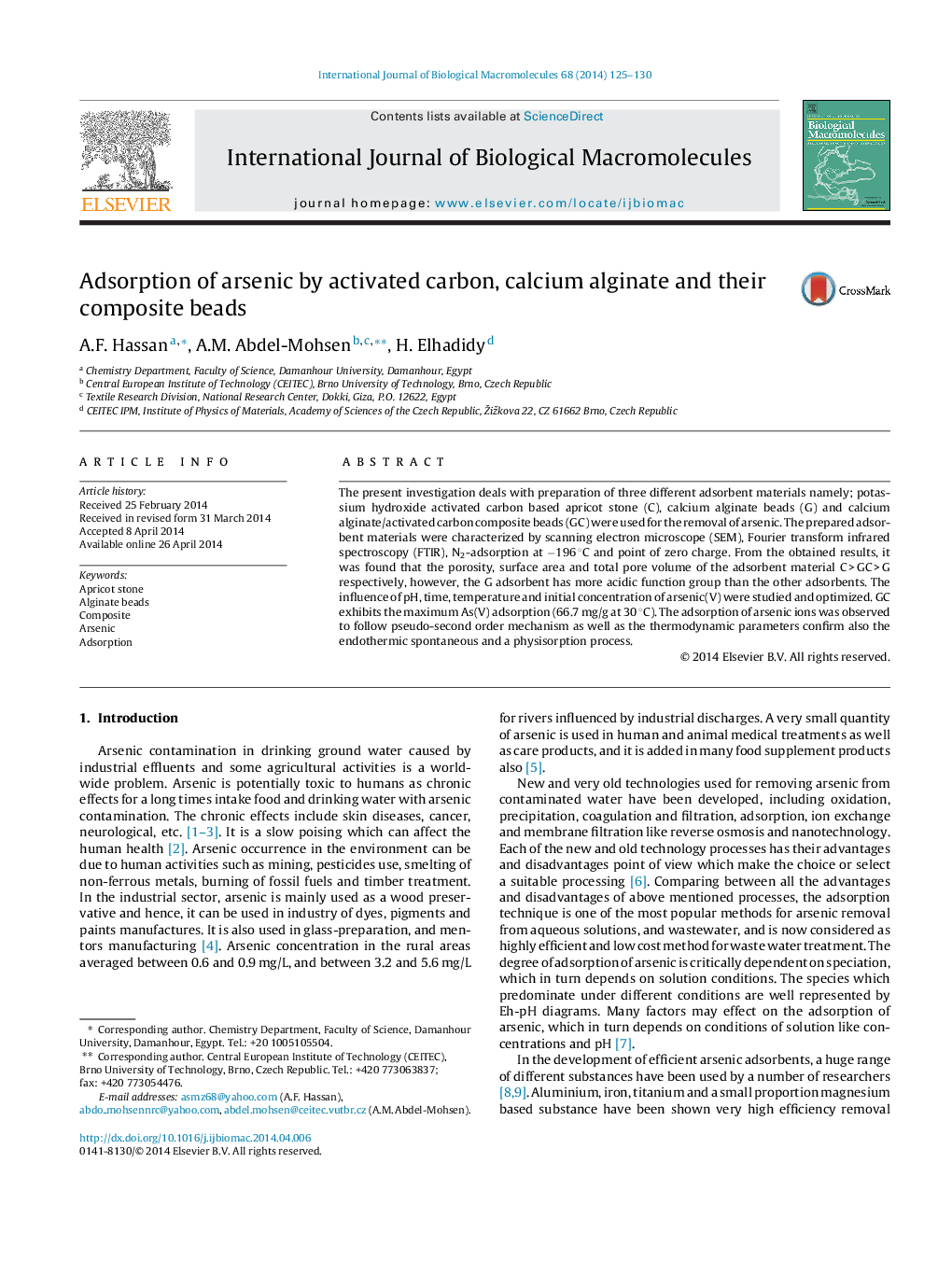| Article ID | Journal | Published Year | Pages | File Type |
|---|---|---|---|---|
| 1986484 | International Journal of Biological Macromolecules | 2014 | 6 Pages |
The present investigation deals with preparation of three different adsorbent materials namely; potassium hydroxide activated carbon based apricot stone (C), calcium alginate beads (G) and calcium alginate/activated carbon composite beads (GC) were used for the removal of arsenic. The prepared adsorbent materials were characterized by scanning electron microscope (SEM), Fourier transform infrared spectroscopy (FTIR), N2-adsorption at −196 °C and point of zero charge. From the obtained results, it was found that the porosity, surface area and total pore volume of the adsorbent material C > GC > G respectively, however, the G adsorbent has more acidic function group than the other adsorbents. The influence of pH, time, temperature and initial concentration of arsenic(V) were studied and optimized. GC exhibits the maximum As(V) adsorption (66.7 mg/g at 30 °C). The adsorption of arsenic ions was observed to follow pseudo-second order mechanism as well as the thermodynamic parameters confirm also the endothermic spontaneous and a physisorption process.
